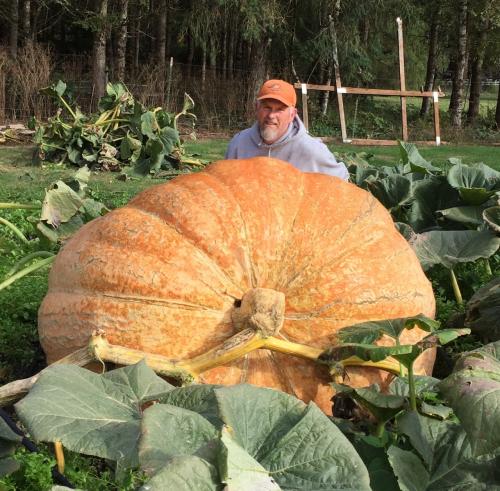How to Grow Massive Pumpkins: The Ultimate Guide for Parents and Kids
Hello, green-thumbed parents and eager little helpers! Are you ready to embark on an exciting gardening adventure that’s sure to be the talk of the neighborhood? Growing massive pumpkins is not only an incredibly fun project for the whole family, but it’s also a fantastic way to get your kids interested in the magic of gardening. So roll up your sleeves because we’re about to dive into a pumpkin-growing journey that will lead to some ginormous results!
Understanding the Pumpkin Basics
First things first, let’s get to know what we’re dealing with. Pumpkins, or Cucurbita maxima, are part of the squash family. They love the sun, require a lot of space to flourish, and grow best in fertile, well-draining soil. But we’re not talking about your typical Jack-o’-lanterns here; we’re aiming for the giants!
Choosing the Right Seed
The secret to massive pumpkins starts with the right seed. Opt for seeds from a variety known for producing large pumpkins, such as Atlantic Giant. These seeds might be a little pricier, but they’re well worth the investment.
- Atlantic Giant
- Big Max
- Prizewinner
Planting Your Seeds
Your timing is crucial! Plant your seeds indoors in peat pots about a month before the last frost date. This head start is essential for growing a record-breaking pumpkin. When they’ve got a couple of true leaves, it’s time to move them outdoors.
Preparing the Perfect Spot
Giants need room, lots of it! Choose a sunny part of the garden with ample space for the vines to stretch out. Remember to enrich the soil with compost or aged manure before planting; pumpkins are heavy feeders and require nutrient-dense soil to reach their full potential.
Time to Transplant
When you transplant your pumpkin seedlings, be sure to handle them with care. Disturbing the roots too much can shock the plants, so be gentle. Space them out with plenty of room between them, and if you’re feeling ambitious, create small mounds of soil for each plant to improve drainage.
Watering and Feeding Your Pumpkins
Keeping your soil consistently moist is key to pumpkin success. Drip irrigation is excellent for providing a steady flow of water. Avoid getting the leaves wet, as this can lead to disease. In terms of feeding, a high-quality vegetable fertilizer is your pumpkin’s best friend. Follow the instructions for the optimal schedule and dosage.
Pollination: The Birds and the Bees of Pumpkin Growing
Pollination is critical; no pollination, no pumpkins. While you can leave this up to the bees, hand-pollination is fun for kids to learn about and ensures your pumpkins get the boost they need. Use a small paintbrush or simply guide the male flower to the female flowers to transfer pollen.
Pruning for Size
For truly massive pumpkins, you’ll need to channel the plant’s energy into fewer fruits. This means selecting one or two promising pumpkins per plant and pruning away the rest of the fruit. It’s not easy to do, but it’s an essential step for those seeking the biggest pumpkin on the block!
Alright, you budding pumpkin growers, that’s just the beginning of your giant pumpkin cultivation journey! Stay tuned for more tips on care, troubleshooting, and harvest time excitement. Just imagine the look on your family’s face when you unveil a pumpkin so large it might just need its own zip code!
Keep nurturing your green thumb, encouraging your kids’ curiosity, and have loads of fun as you watch your pumpkins swell to fantastic proportions. With a little patience, care, and lots of love, you’ll have a majestic pumpkin that’s a true autumn marvel!
Remember, the key to giant pumpkins lies not just in what you do, but in the joy of doing it together as a family. Happy gardening!

Five Things Parents Should Know When Preparing to Grow Massive Pumpkins
1. Patience is Key
Growing giant pumpkins is a long-term commitment and can take the entire growing season to come to fruition. It’s important to remind both yourself and your eager little helpers that pumpkin growing requires patience and dedication. The process from planting the seed to harvesting can take anywhere from 120 to 160 days, so prepare for a whole season of care.
2. Space is Essential
A massive pumpkin plant needs a lot of room to expand. Each plant can spread out over as much as 500 to 1,000 square feet. As you prepare your garden, ensure that you’ve cleared enough space for your pumpkin to grow unhindered. It might mean dedicating a significant portion of your garden specifically for your pumpkin patch.
3. Soil Preparation is Crucial
Before you even plant your first seed, the soil should be your main focus. Massive pumpkins require rich, well-drained soil with a pH between 6.0 and 6.8. Incorporating plenty of organic matter such as compost, aged manure, or leaf mold will give your pumpkins the nutrients they need to grow large and healthy.
4. Consistent Care Goes a Long Way
Regularly watering, feeding, and checking for pests and diseases are all part of the daily care regimen for your pumpkin. Set a schedule for these tasks and involve your kids in the process. It will help you stay on track and teach your children about responsibility and the importance of routine in caring for living things.
5. It’s a Learning Experience
Apart from the aim of growing a giant pumpkin, this activity is a goldmine of learning opportunities for kids. From understanding plant biology and the importance of bees in pollination to the science of soil and the role of nutrients, there’s so much to discover together. Embrace each step as an educational journey, and don’t be afraid to look up and share information about the questions that inevitably arise.
As you gear up for your giant pumpkin growing project, keep these five key points in mind. With the right preparation and mindset, you and your family are on your way to growing a pumpkin of legendary proportions. Let’s get those pumpkin seeds in the soil and start the adventure!
See more great Things to Do with Kids in New Zealand here. For more information see here
Disclaimer
The articles available via our website provide general information only and we strongly urge readers to exercise caution and conduct their own thorough research and fact-checking. The information presented should not be taken as absolute truth, and, to the maximum extent permitted by law, we will not be held liable for any inaccuracies or errors in the content. It is essential for individuals to independently verify and validate the information before making any decisions or taking any actions based on the articles.




